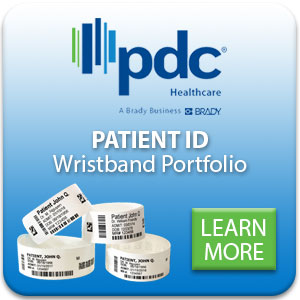Re-posted with permission from PDC Healthcare and edited.
In a busy hospital setting, patient identification errors can happen. For instance, if two patients have similar names or illnesses, there is a risk of staff misidentifying a patient and pulling the wrong chart. These patient ID errors can lead to significant mistakes and inefficiency in healthcare settings.
Patient misidentification can lead to errors in medical records, clinical time lost, revenue loss for institutions and, most importantly, potential permanent physical damage in patients. By improving the methods in which patients are identified, errors can be avoided, and hospitals can run more effectively. Below are ways that the ISG can help you improve patient identification in your facility.
Ways to Improve Patient Identification
1. Using Two Patient Identifiers
Perhaps the most critical step in patient identification is using two identifiers in any patient interaction. For example; any combination of name, date of birth, address, and medical identification numbers would be acceptable and would limit the possibility of misidentification. In acquiring two identifiers from a patient, staff also should never use room numbers.
Misidentification is most likely to happen during patient registration. And staff handing off patients during diagnostic testing and treatment presents additional high-risk moments for patients to be misidentified or separated from important documentation. The documentation itself poses a risk because of the high potential for human error.
2. Improving Patient ID Wristbands
In terms of impact, the average hospital loses millions of dollars per year in denied claims resulting from misidentification. As a result, healthcare providers are looking to address identification mishaps with a combination of technology and the most traditional form of patient ID: the wristband.
When intake staff can administer ID wristbands with barcodes that have a greater range of capabilities, the potential for human error diminishes. PDC Healthcare offers highly durable wristbands that use barcodes and connect easily to patients’ electronic medical records.
3. Providing Interpreter Services
Patient identification errors can also be limited through hospitals placing an emphasis on interpreter services. Language barriers can lead to miscommunications and present patient identification challenges. By providing improved interpreter services, hospitals can greatly reduce the chances of misidentification.
4. Establishing a Standardized Protocol
Additionally, institutions should establish a standardized protocol for patient identification. With an institution-wide protocol in place, staff should be continually educated on such protocols. These protocols can be taught to staff in orientations and various training sessions.
Your Local ISG Expert Can Help
Overall, limiting patient identification errors will continue to be an urgent challenge for hospitals. And unfortunately, there’s no single solution for eliminating it. Through a multifaceted approach, hospitals could see vast improvements in the coming years, especially as innovative technological elements are incorporated to a greater degree.
The ISG, with its network of local dealers across the US and Canada, can provide your healthcare facility with the solutions it needs for positive patient identification, improving patient safety and more.
Original article written by Jess Downs for Connect ID.

